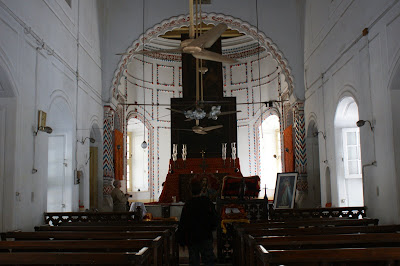 Today since I had a van I went back to Dhamrai, the brass village after first going to the International Trade Fair here in Dhaka, which cost a whole 12 Tk entry (20c). The Trade Fair was an exhibition of Bangladeshi companies//businesses and what they produce plus a few exhibits from surrounding Asian countries. There was shop after shop with saris and fabric for Salwar Kameez: scarlet, bright orange, pink, buttercup yellow, green with embroidery, sparkles, block printing . . . . . Some in silk, some in cotton and some synthetic but it all gets a bit over-powering in the end. Although you can get most of the same stuff in the shops around Gulshan anyway. I just bought a silk scarf for a gift for 250 Tk (about $4 Australian).
Today since I had a van I went back to Dhamrai, the brass village after first going to the International Trade Fair here in Dhaka, which cost a whole 12 Tk entry (20c). The Trade Fair was an exhibition of Bangladeshi companies//businesses and what they produce plus a few exhibits from surrounding Asian countries. There was shop after shop with saris and fabric for Salwar Kameez: scarlet, bright orange, pink, buttercup yellow, green with embroidery, sparkles, block printing . . . . . Some in silk, some in cotton and some synthetic but it all gets a bit over-powering in the end. Although you can get most of the same stuff in the shops around Gulshan anyway. I just bought a silk scarf for a gift for 250 Tk (about $4 Australian).Then it was off to Dhamrai, along the mostly empty roads due to it being Friday, the day or rest here. Compared to last time it was very different. The vast swathes of water either side of the road have been replaced by rice paddies: a field of green. In some people were bent over planting the small plants in the water-covered mud.
Once in Dhamrai it was back to Dhamrai Metal Crafts located in a beautiful old house. This time I got to see of the more of the the steps in the traditional "Lost Wax" process they use. Plus I also got the hear the beautiful "Singing bowls" again.
The steps:
1. A rough shape of the statue is made out of clay.

2.This clay shape is covered by about 1 cm of grey-streaked black wax into which the intricate details of the outside of the statues are carved.

3.This is then covered by a further layer of clay. The whole thing is then fired, melting and burning the wax to produce the mould into which brass is then poured. The clay is then removed and "voila" there is a statue. The statue is then fine-tuned with trimming, polishing and the addition of any fine decoration.

This is the end product.

Again I didn't buy any brass, this time just a DVD of theprocess that I still have to watch. But there were five lovely frogs each playing a different musical instrument for 9500 Tk, a small but heavy cobra for 1500 Tk and the singing bowls, well they are upwards of 3000 Tk. Maybe next time.































